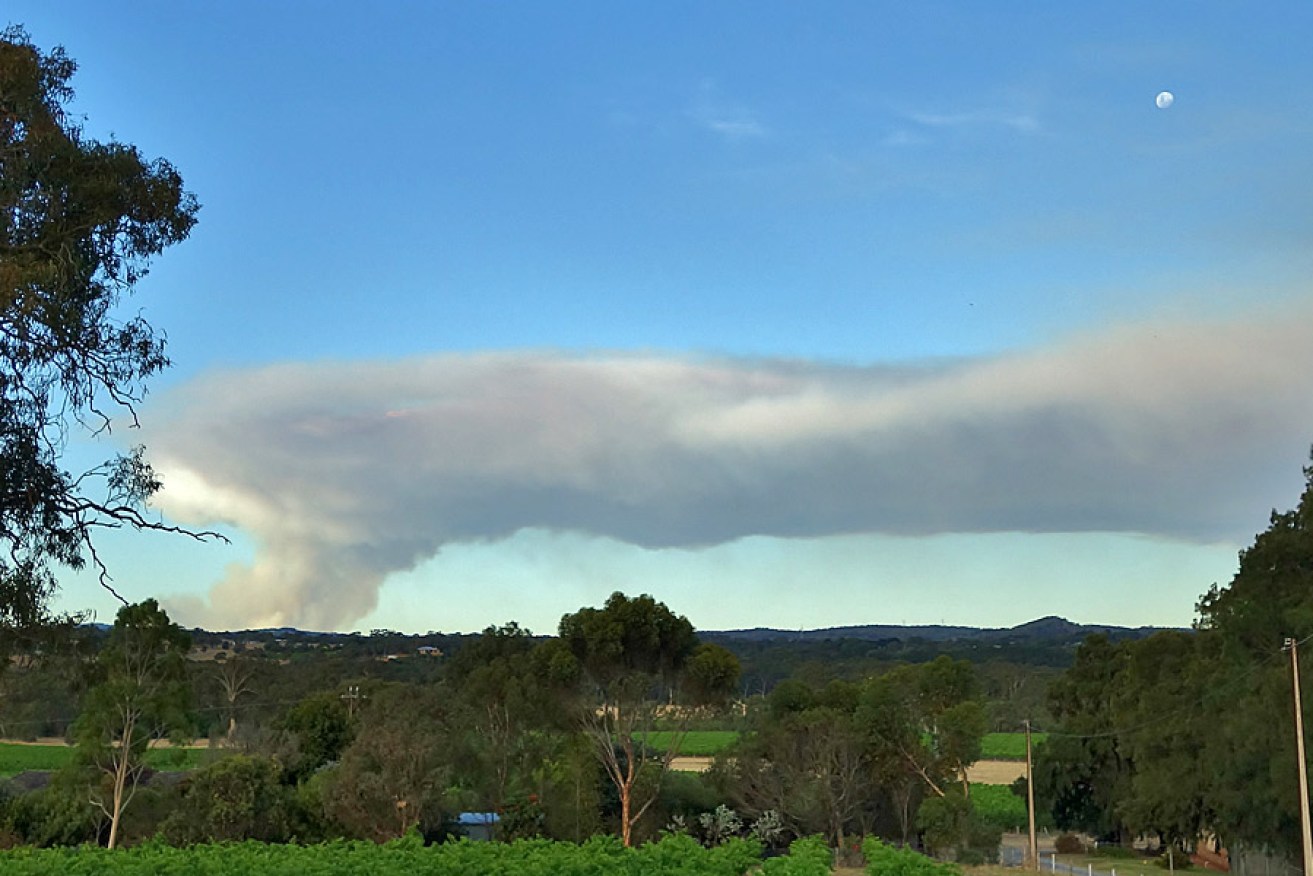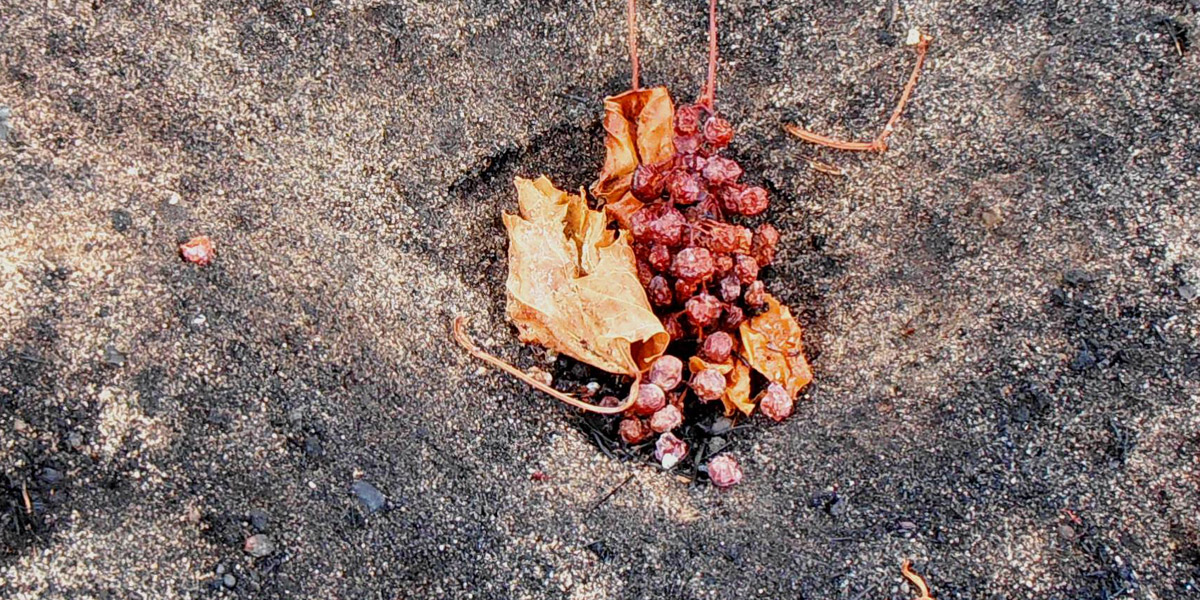The Battle of Armageddon


Smoke from the Adelaide bushfires, as seen from Kangarilla on Friday. Photo: Philip White
There were no mobile phones in 1983. No internet. No Facebook or Twitter. The Country Fire Service radios were not much better than pedal-powered. Most of the fire trucks ran on petrol, which vaporised in extreme heat.
So on the day some Christians already called Ash Wednesday, February 16, Adelaide was on a hiding-to-nothing by mid-morning, when the temperature ripped up past 43 Centigrade and the winds hit banshee force, whipping round from the west to the north and back again.
I stood sweating in my second-floor Winestate office in Pirie Street, tasting rum with David Cleland and Phil Tummel, two grand old sages who knew their way around the rum game. There was no air-conditioning, and by 10, that stifling dry heat had those rows of glasses smelling more like a sinister blend of transmission oil and napalm than anything resembling a drink. The darker rums seemed particularly explosive.
The joint I shared in Medindie had air-con, so we decided to pack the whole tasting up and move it there, where we stood inside the cool arc of the big bay window, facing a more bearable array of tinctures.
By noon, the northerly gale was hurling twigs and gravel against that north-facing window. It felt like we were on the bridge of a warship sailing hopelessly across a desert into the Battle of Armageddon. We made our decisions about the rums, packed the dozens of bottles back into their boxes, and fled to the Maylands pub for a cold beer and a steak.
By the time we got to table, we were unaware that the obvious had begun: a fire had set off at McLaren Flat and had taken bare minutes to whip east across the Fleurieu.
Mal Batkin, a Tollana Wines rep, was about to join us when he was called to the telephone by a barman. He came back flushed. “The wife just called,” he said. “There’s a bloody bushfire coming down the gully over our back fence. I gotta go.”
Mal lived in the leafy Tea Tree Gully: the blaze was already licking at suburban homes. But within no time at all the whole of the North and South Mount Lofty Ranges, from Clare to the Fleurieu, were a series of fiendish conflagrations. Something caught alight at Mt Osmond, and within minutes the Eagle on the Hill was gone, the new freeway was a melting track to Hell, and Cleland National Park, the Mt Lofty summit, Crafers and Stirling were under immediate threat.
“This whole city has lovers, friends and relatives up there. There’s nothing we can do.”
It was impossible to discover any detail of what was happening. My tasting colleagues scoffed their tucker and went off to their respective homes to hunker in and prepare for only the Devil knew what.
I’d arranged months earlier to that evening entertain Tessa Sayle, the legendary London literary agent. Former “organiser” of JP Donleavy and agent of Tom Keneally and the gonzo illustrator Ronald Searle, among others, Tessa had been famously married to that legendary hard-arse of the far-east press corps, the Tokyo-and-Hong-Kong-based Murray Sayle. He called her The Austrian Princess. Star-struck, I expected to collect somebody with eccentric tendencies at the very least.
But I wasn’t ready for Tessa Sayle.
A tall, elegant, grey-haired and bejewelled lass in jeans and a poncho came off the plane, obviously twisty and freaked. Her flight had come from Darwin, and it took her some time to explain the extent of the fire she’d just flown over. She thought she’d come to Hades. Which she had. She thought her shock was worse than my shock. Which it wasn’t. I checked her in to the brand new Hilton, then took her to the Hotel Adelaide, the posh multi-storey residential pub on the corner of Brougham Place and O’Connell Street. There, from the cocktail bar on the top floor, we could watch the Hills burn down.
I couldn’t convince my guest that there was nothing else to do. The phones were down, and it would be madness to drive up the blazing freeway. It would be a very long, horrible night. I tried to explain that only in the morning, or the one after that, we might begin to learn of the extent of the damage.
Yes, I agreed, of course I knew people trapped in those blazing gullies. “This whole city has lovers, friends and relatives up there. There’s nothing we can do.”
Tessa asked to be returned to the Hilton. When I later went to collect her for dinner, I was handed a brief note explaining that she’d caught the first plane out. I never heard from her again. I think she thought we were savages, drinking Campari and soda while our kinfolk burned.
In the morning, I drove through the smoke to Petaluma, to see how my friends there at Piccadilly had fared. The whole winery crew were sitting in shock and ashes. They’d fought the fire at the vineyard fences all night. Proprietor Brian Croser had burnt his forearms in a failed attempt to save a neighbour who perished.
I boiled the big kettle and made a pot of tea. Nobody said much.
Although there was barely any Adelaide Hills wine industry then, it took days to discover the extent of that damage. The other fledgling Hills vineyards of the Henschkes, Tim Knappstein and Geoff Weaver on the Croft Road Ridge between Lenswood and the Torrens Gorge were all damaged to some extent.
Knappstein had to start again from scratch.
Just across the gorge from them, the Drogemuller family’s Paracombe Vineyard is surrounded by fire as I write. This is the third day they’ve spent there with their modest water tanks and no power, but a great deal of determined German stubbornness. Paul and Kathy lost everything in that Ash Wednesday blaze, but got on with having their two great kids and building an exemplary vineyard and winery business.
There are many vineyards around the Hills that have not survived this tragedy; maybe even some wineries. Given the current parlous mess of the Australian wine business, with over-supply in nearly every region, there will be some who don’t bother replanting.
Only time will tell.
The wine-side of the internet chitter-chat is already buzzing with speculation about smoke taint destroying the vintage.
While there are suppliers who claim to have perfected chemical methods of removing this destructive peaty reek from wine, many growers will not know whether indeed they have the problem until the smoke has died away, they regain access to their properties and get the chance to have their fruit tested at expert labs like that of the Australian Wine Research Institute.
If, indeed, their vines are alive.
Smoke taint is worst after veraison, when the skins soften and change colour and the berries begin producing sugar in place of preserving acid. Vintage 2015 has already started in some parts of Australia, and veraison is earlier than ever before recorded. Weeks earlier. Because it’s usually cooler up there, I haven’t heard of any Hills vineyard yet hitting veraison. But why would one ask, this early in the vintage?
Note to self: that’s another thing to check annually, but a month earlier than ever before.
As we did in 1983, it’s time for our splendid community to work together, stop the gossip, and get back on with the work, just as the Drogemullers, the Petalumas, Knappsteins, Henschkes and Weavers did those decades ago.
In the meantime, get down on your knees to the fireys, police, the relevant government authorities and that very cool and measured Premier, and adore the remarkable fact that not one person has perished. We’ve learned a lot since 1983. While you’re down there, you might as well beg Bacchus and Pan that tomorrow is not another Ash Wednesday.





